Wedding Rings
On October 22, 2022, I married the love of my life. Being the maker that I am, I couldn't settle for any old store-bought rings. Pulling from my history with jewelry design, I decided to create custom rings for the occasion.
The Engagement Ring

The first step in any marriage is the engagement. Deciding what sort of ring I wanted to create was no easy task. Although my partner and I had discussed her preferences in the past, coming up with the right design was a challenge. I started with a series of thumbnail sketches, exploring different profiles and playing with stone shapes. At this point, no idea was off the table.
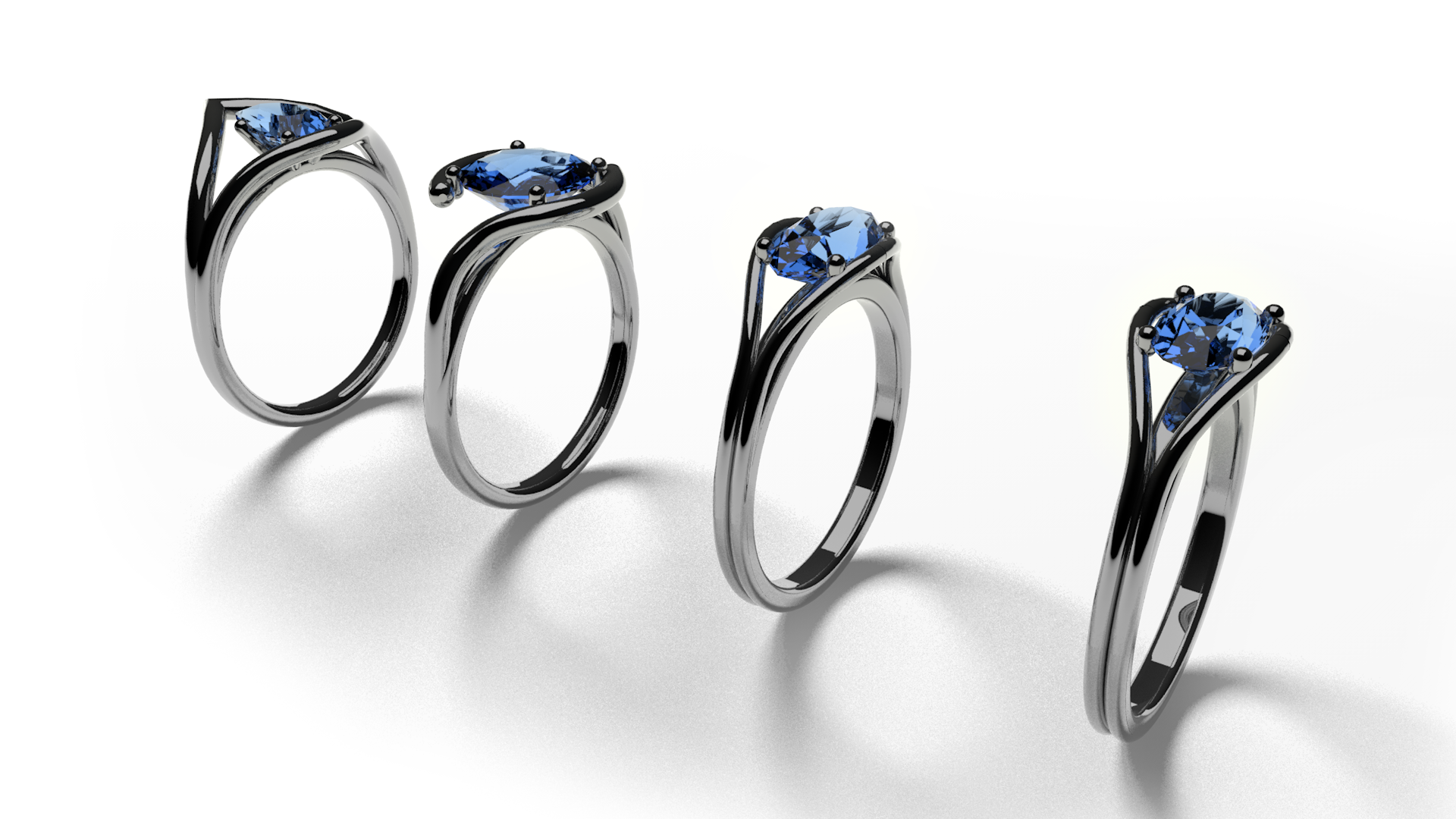
Once I had a good variety of designs sketched out, I picked a few of my favorites and made 3D models from them. These rough models, created in Cinema 4D rather than a CAD program such as SolidWorks, were only intended to provide a more accurate visualization of the designs. They aren't built to scale or print-ready, but they allowed me to more accurately gague how the final ring might look.
I ultimately decided on a design consisting of two halves that split at the top to hold a pear-shaped stone between them. Originally these halves were like thin wires, but as the design evolved I switched to flat sections, reminiscent of the pages of a book (my wife is a literary agent and an avid book lover). Both the prototypes and the final ring were 3D printed by Shapeways.
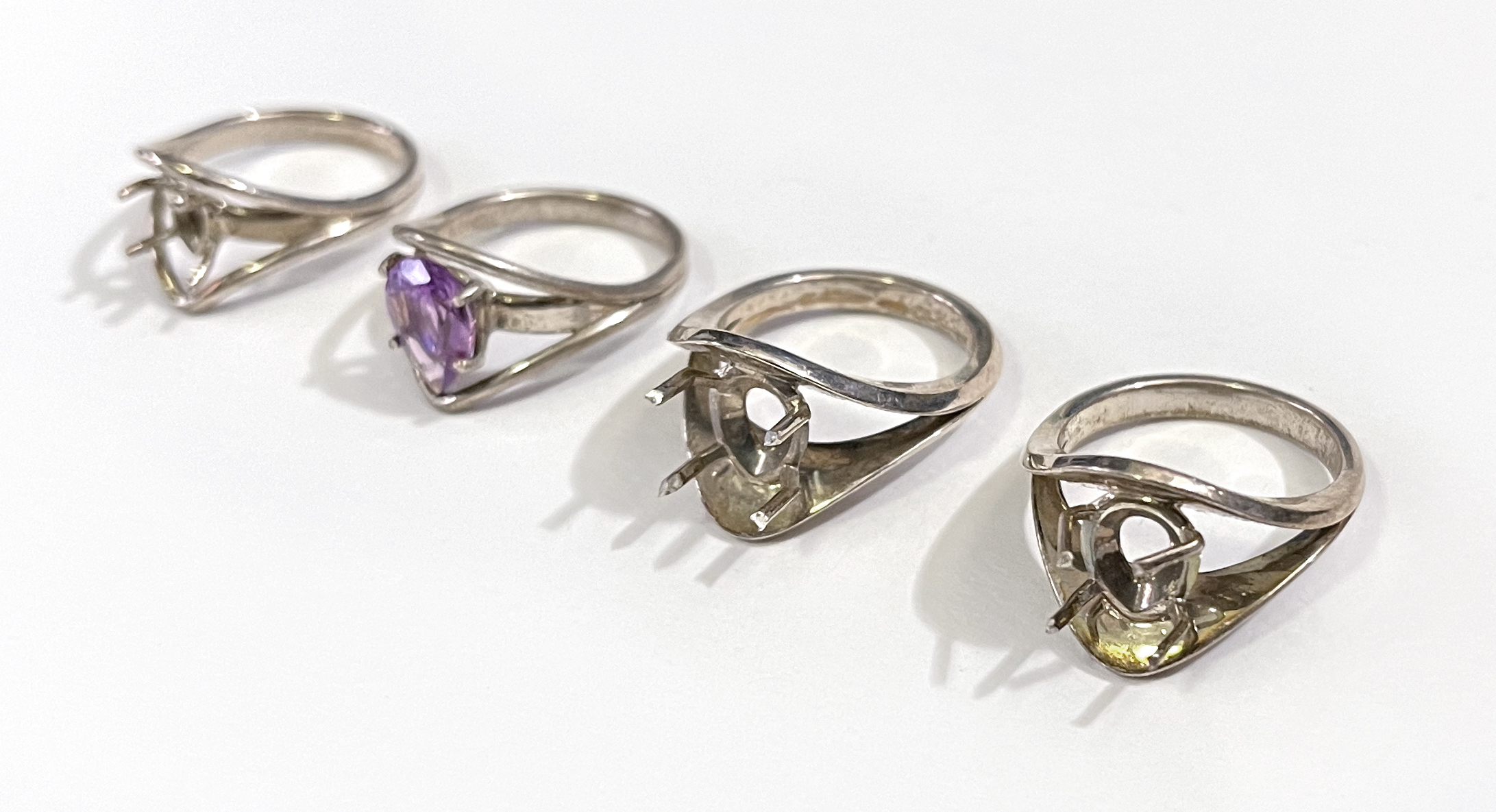
Once the design was complete, I ordered the final ring in white gold and had it set by a local jeweler. I then set to work on one last project before I was fully ready to propose: the box. Sure, I could have purchased a ring box. I could have also just purchased a ring. But since I put so much effort into creating a custom ring, it seemed only fitting to make a custom box to match.
My main goal for the box was discretion. The last thing I wanted was a bulge in my pocket giving away my proposal plans. I designed a mechanism that allows the ring to lay flat when the box is closed, reducing the thickness of the box. I also took the opportunity to play with the forms of a traditional ring box, rounding out the shape and accenting it with an oversized hinge in the back held together with a contrasting brass pin (with a smaller brass pin for the secondary hinge). Finally, I capped it off with an "AA" monogram for our initials: Alex and Alex.
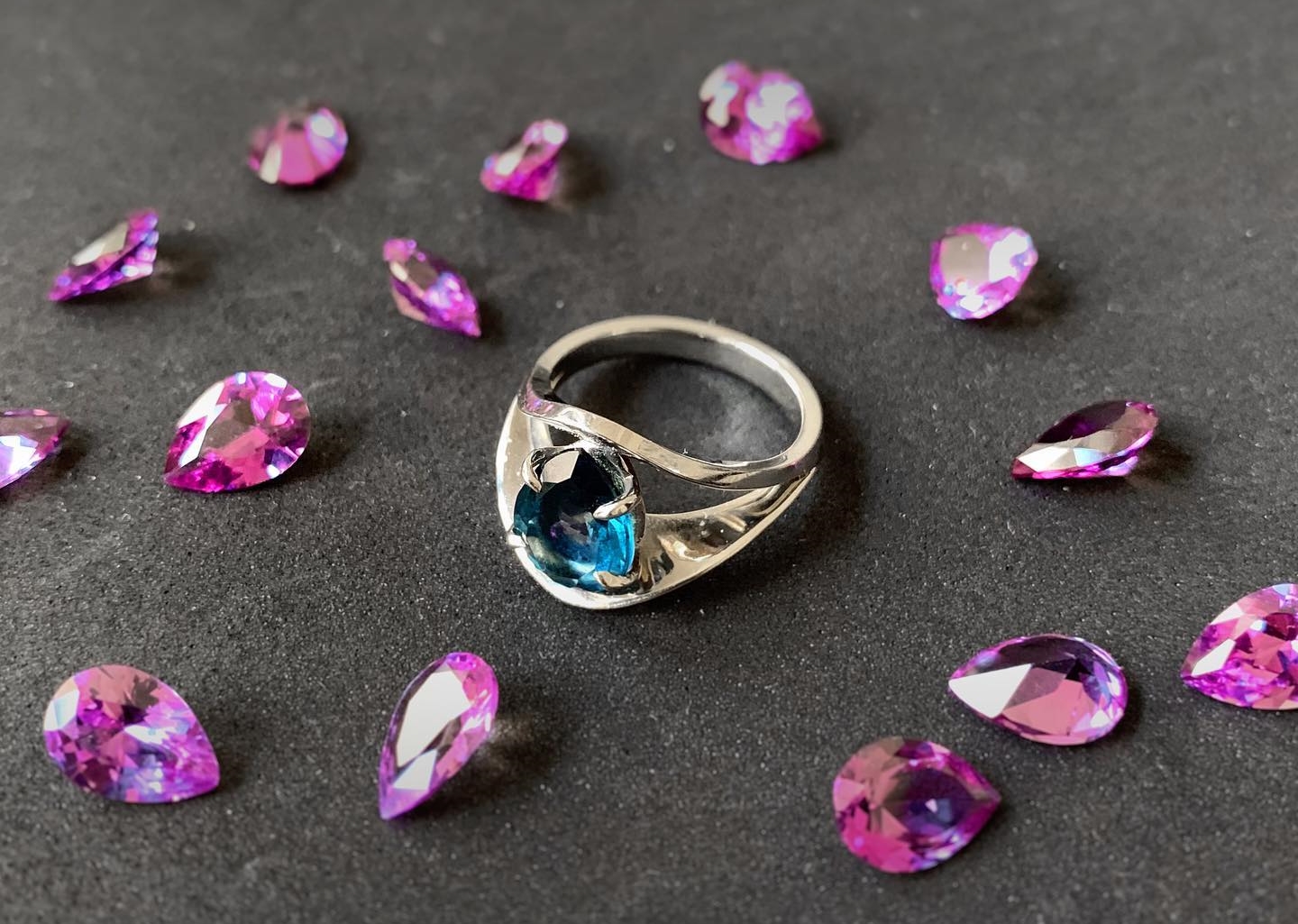
The final ring features a pear-shaped (her favorite cut) stone in a brilliant teal-blue color (her favorite color) set between two gentle curved forms. The construction of the setting makes the stone appear to almost float, as if it's simply resting between the folds. A subtle ridge around the band catches light and forms the edges of the split surfaces, as if the ring is a book being peeled open to reveal the precious treasure within.
Needless to say, she said yes.
Our Wedding Bands
Creating my wife's wedding band was actually fairly straightforward. During the design process for her engagement ring, I also designed a simple band that perfectly fits alongside it. Rather than a more ornate design that commands attention, the wedding band features little ornamentation aside from a subtle ridge that echoes the structure of the engagement ring.

Designing my ring, on the other hand, was a much more complicated process. I found myself torn on what style to choose, and how best to create a design that complimented her rings. Rather than sketching many ideas and refining, I took a different approach for this project: I created a basic design in CAD and iterated upon it. I wanted my ring to echo the forms found on the other two, and I found a few different avenues for exploration.
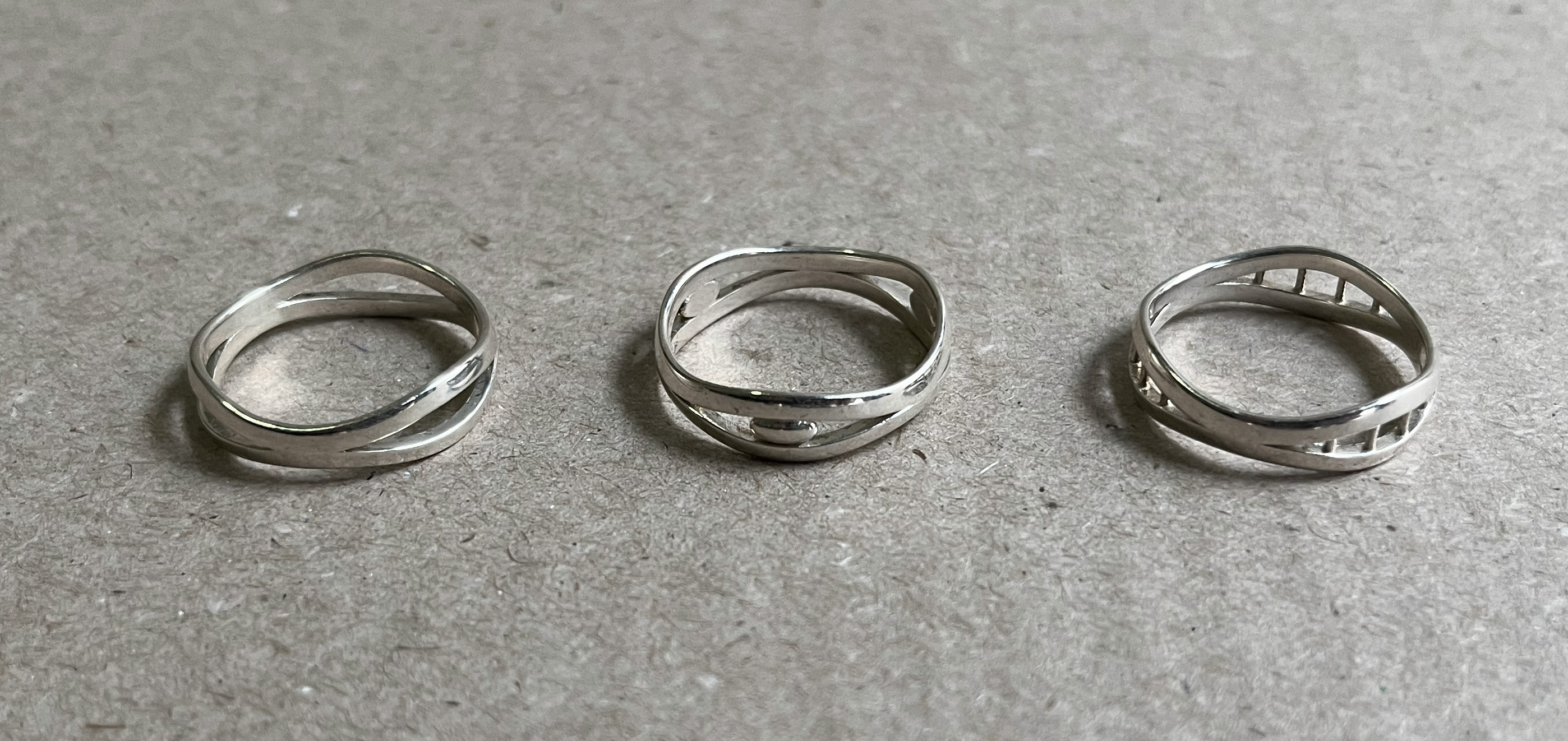
My first idea was a series of rings that split apart in three places, mimicking the way the halves of the engagement ring split apart. I tried a few different approaches to resolving the split geometries, including adding faux "stone" shapes between them and thin parallel bars. This approach held some promise, but I wasn't happy with the overall profile of the rings; I wanted something more consistent and solid-feeling.
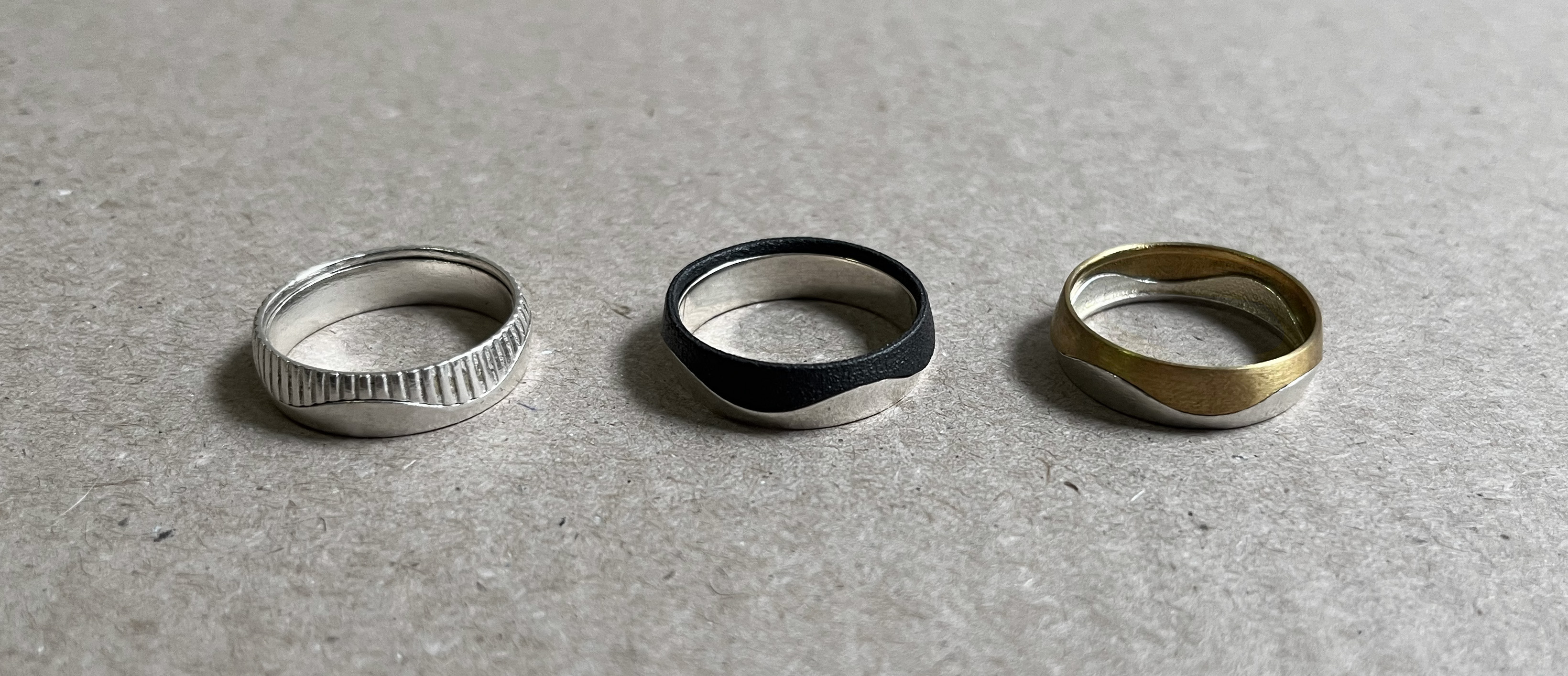
My next idea was to split the ring in half with a wavy ridge and treat each half differently. I tried making the halves out of different materials as well as giving them different surface finishes. I really like how these experiments turned out, but I ultimately decided that the aesthetic was straying too much to be considered a matching set with the other two rings.

I also tried taking a step in a completely different direction and designed a band with a reaction diffusion pattern, an organic-looking texture generated programmatically to mimic forms found all throughout nature, wrapped around it. This ring Is really striking and unique but, ultimately, suffers from the same issue of not fitting with the other rings well.

My final idea was to turn the single ridge around the other rings into a series of ridges that spiral along the surface of a band. I created several versions of this idea, playing with the balance of rigidity and softness. I ultimately decided on the most rigid version, a design comprised of sharp angles that catch light well and suit the other two rings perfectly.

I couldn't be happier with the way these rings turned out. I feel proud to wear mine every day, and we both love showing our rings off to other people.